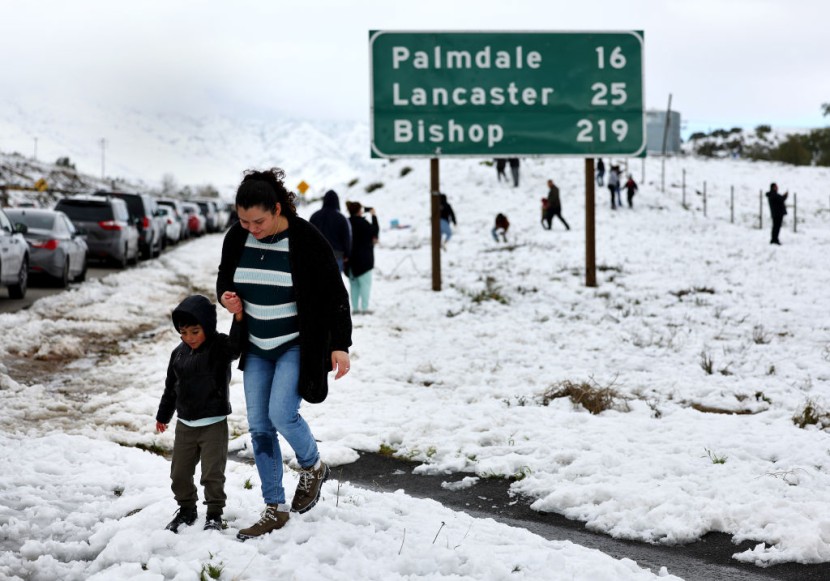
Tornado warnings were issued for parts of Texas, Kansas, Missouri, and Oklahoma as a severe storm system pounded the Plains on Sunday night, unleashing damaging winds and rain.
The United States National Weather Service (NWS) verified late Sunday that a tornado had hit the city of Norman in Oklahoma, causing severe damage to structures and the loss of electricity. An early evening tornado was reported near Mclean, Texas, east of Amarillo, according to an Axios report.
In a statement, the NWS warned of "a heightened danger of wind gusts of 65 knots or more, two-inch or bigger hail" and tornadoes rated EF2 to EF5 on the Enhanced Fujita Scale, which implies there may be "incredible" devastation from gusts of over 200 mph.
Nighttime tornadoes are especially dangerous and require additional preparedness.
— NOAA WRN Ambassadors (@WRNAmbassadors) February 27, 2023
🌪️Have multiple sources that can wake you up (cell phones and NOAA Weather Radio).
🌪️Keep shoes by your bed side
🌪️Set a flashlight within reach#WeatherReady pic.twitter.com/xe7XEGWmAl
As of early Monday morning, PowerOutage reported that more than 231,000 locations throughout the United States were without electricity.
Extreme Weather Expected To Persist
The meteorological agency has warned that snow will make travel difficult over most of the United States tonight, particularly in the Pacific Northwest, the Upper Midwest, and the Northeast of the nation, per NBC News.
The winter storm is expected to move north by Monday afternoon, posing a marginal chance of severe weather for areas including Indianapolis, Cincinnati, and Columbus, Ohio, according to CNN.
In the West, where last week's storms caused uncommon blizzard warnings and road floods in California, a second system of rainfall and elevated snow will surge from the Pacific Northwest into California and the Rockies through Monday.
Winter storm warnings are in effect for nine western states as significant snowfall is predicted for the region on Monday, including up to 10 inches in the Cascades of Washington state by early Tuesday, 1 to 3 feet in high altitudes, and mountain peaks in western Oregon, and 1 to 3 feet in mountain regions of the Rockies.
Related Article: COVID-19 Update
© 2026 HNGN, All rights reserved. Do not reproduce without permission.








